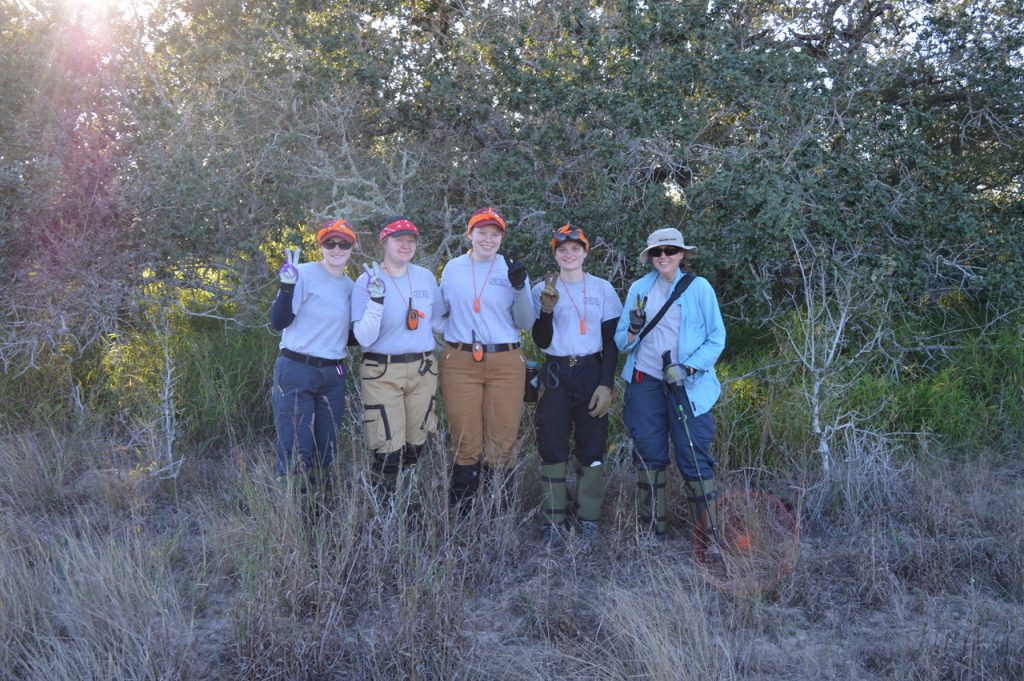Day two began with the plan to spend an entire day searching on an over 6,000-acre ranch in Brooks County. Our morning began with a humongous breakfast with Don and Ray at a local establishment called Rebecca’s Breakfast and More. Three out of the four of us decided to indulge in a plate of pancakes rather than the breakfast tacos they’re known for. We spent the breakfast sharing some of the photos we took the day before and getting to know each other a little bit more. Each of us filled our stomachs to the brim which we would need for the long day that was ahead of us.

Once we finished eating, we headed straight to the ranch that we were to spend the entire day searching on. I got to ride with Don and Socks in his Jeep where he told me about the many ranches, politics, and economics of Falfurrias. Ranches in Texas are usually passed down by lineage, but, on occasion, they are sold for millions of dollars. The owners may live on or off the property, hire a ranch manager, and sometimes a sub-manager, who often live on and handle the workings of the ranch. Many of the ranches in South Texas generate thousands in revenue via ‘for-profit’ hunting. This has led to ranchers importing and breeding exotic animals such as javelina (similar to wild hogs), a kind of Indian deer called nilgai, zebras, and even a kind of buffalo.
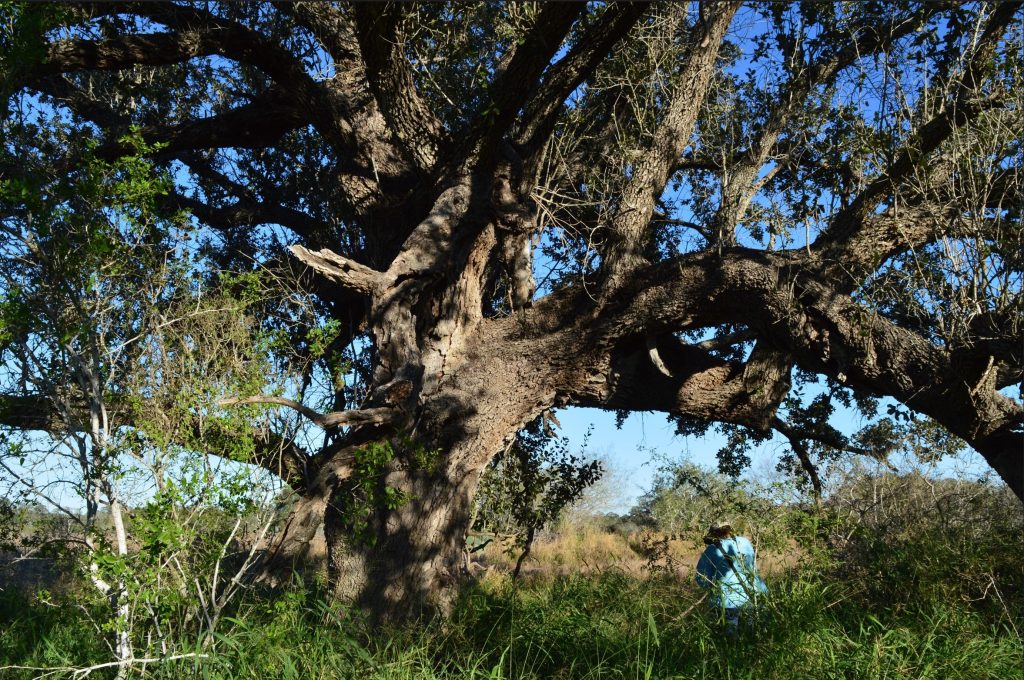
On a previous search of the area, Don had recovered partial skeletal remains. We went back with the Beyond Borders team to try and find some of the other elements of the skeleton. The terrain was denser and had more variety than the ranch we briefly searched yesterday. We traded the short grass and small sand hills for nearly 4-foot tall shrubs and mots (masses of trees) the size of houses. The foliage on this ranch grew to be very big and uncontained. These mots were a twisted maze of thorned branches acting as a natural barrier to the usually cooler lush center where the stump of the tree is located. We searched many of these mots during our time in the field, as evidenced by our torn flannels and long-sleeved shirts. Mots can be so thickly dense that you may not be able to see someone only a few feet from you. I experienced this confusing maze and how easy it is to get lost, panicked, and turned around. We had nearly made it through a dense mot to search for forgotten items and remains. One minute I have a clear view of my partner, and the next I duck under some trees and suddenly lose them, although I could hear them right next to me. I took one direction which appeared clear, but quickly found myself surrounded by thorned twigs and giant branches blocking my path in all directions. I knew that the outside was just a few feet in front of me and I could catch glimpses of my companions’ backpacks and brightly colored bandanas. It was then I tried to backtrack ducking under branches but in all the confusion I had lost where I was and went back and forth between the same areas (a natural reaction that tends to happen out in the borderlands). Knowing that I was lost and would not be able to navigate a way out by myself, I called over the walkie-talkies to let everyone know. Once Don got eyes on me, it became a coordinated effort to direct me to travel the less than 10 feet I was from the tree line.
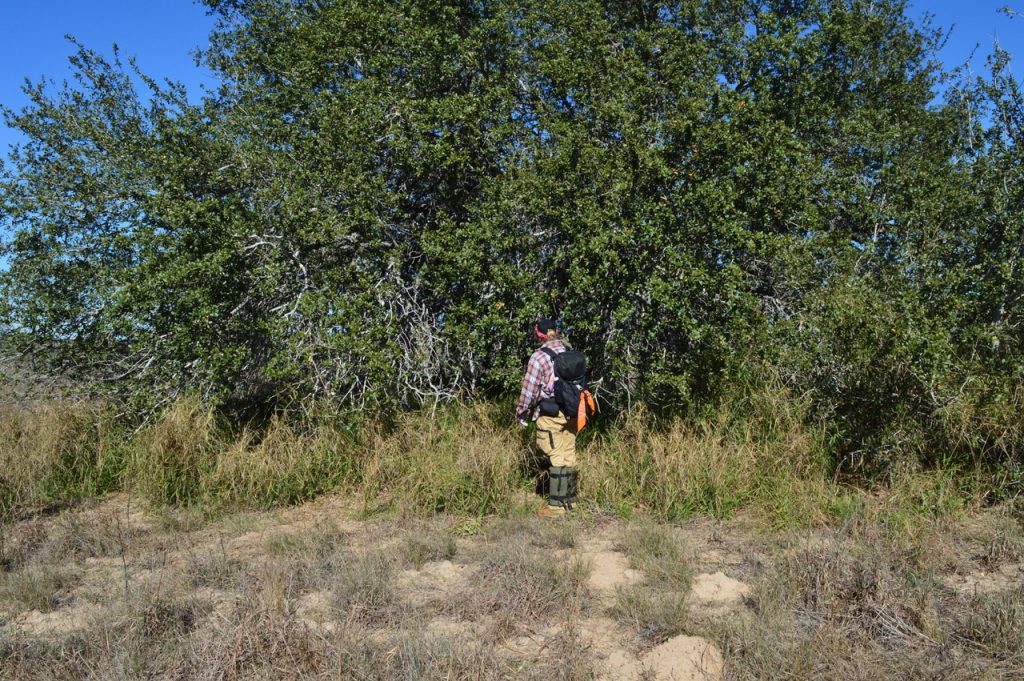
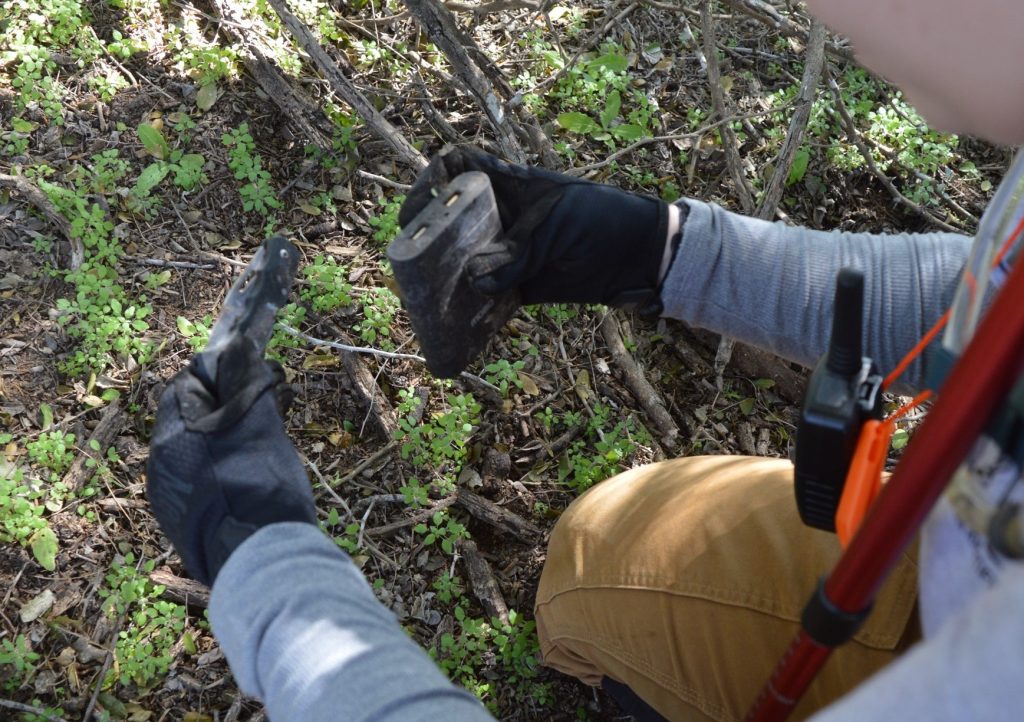
Using systematic line searches of the brush and mots, we discovered several items left by migrants while traveling, including the usual water jugs, clothing, cans, and food containers but also items such as a pocket knife, a dead power bank, and a backpack in good condition with a jug filled with unclean water inside. Every time we discovered a discarded item, it made me think about the person who left that item behind. A particular stump in a mot had tons of empty fruit cups along the ground. Was this a group traveling together? How many? How long have they been traveling? Some items left confused me such as the pocket knife, but particularly the backpack with water. We have learned from Eddie, Dr. Latham, Don, and Ray that the main reason migrants die traveling to the United States is dehydration. Why then would someone leave an item versatile in carrying many things and a jug containing one of the most pivotal things needed for this journey? In thinking about some of the literature I’ve read and stories Don and Ray have told us, there could be any number of reasons why they decided to leave them. This individual might not have had the strength to carry the backpack and jug any longer. They may have recognized that the water was not safe to drink and decided to leave it behind to unload some weight. They could have likewise been spooked and fled the area quickly, thus leaving it behind. We may never know the true reason.
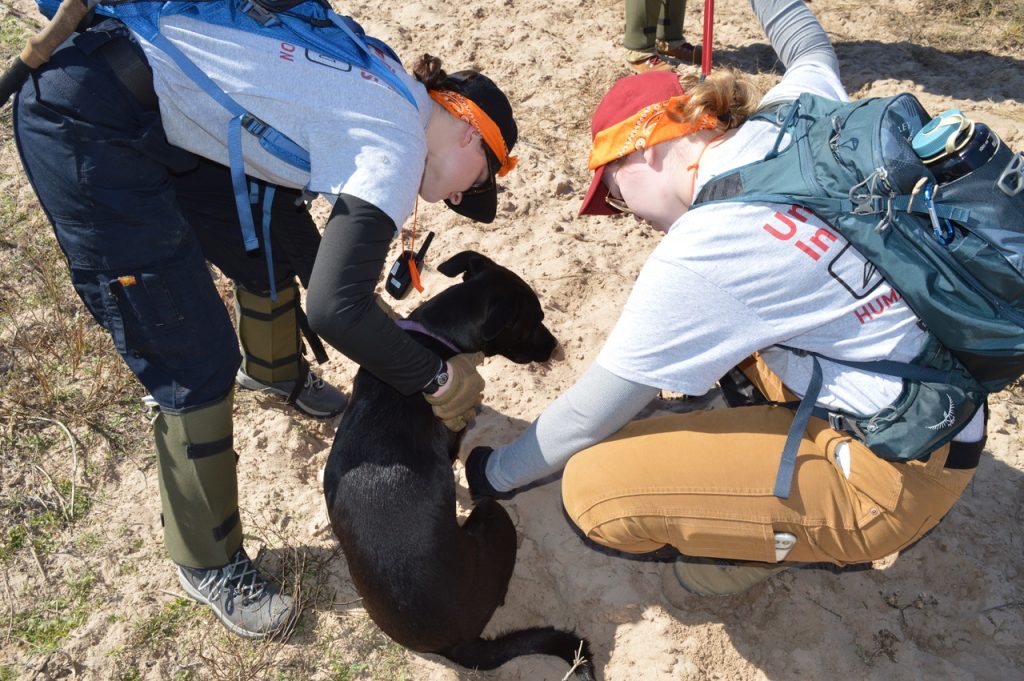

After stopping for a late lunch and playing with Socks, we headed back out to search more. As we trekked through the tall grass, uneven terrain, and dodged cacti, I would frequently think about the migrants who had walked where I walked. Here I am with gaiters, thick Carhartt pants, a thick flannel, and sturdy hiking boots whereas migrants may have a pair of blue jeans, a t-shirt, and tennis shoes. We are walking the same path, but for different reasons, and from vastly different positions of privilege. The drive and determination of these individuals demands respect. Respect and dignity should also be shown to those who passed away while trying to achieve a life better than what they once came from. That’s what I hope our work achieves by the end of our stay here in Falfurrias: restoring the basic human rights of those who’ve passed by recovering them and helping repatriate them back to their loved ones.
We finished our search for the day, as a team, exhausted but happy with our progress. With Don and Ray, we ate a humongous dinner at Jalisco Taqueria. With full stomachs, we left to head back to our hotel to reflect, refresh, and recharge for day 3!
